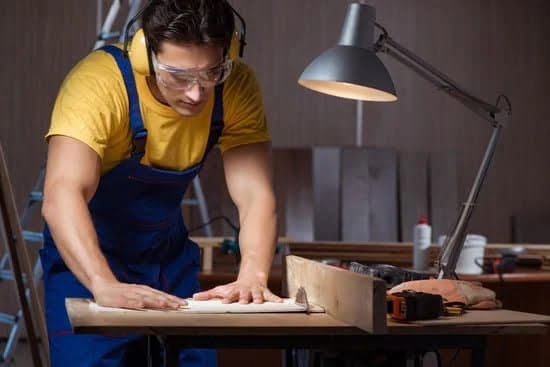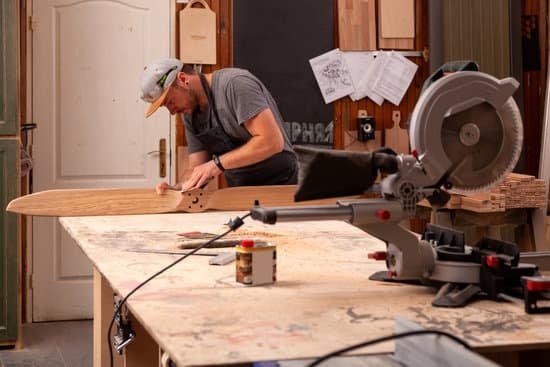Are you wondering how to install woodworking vise? A woodworking vise is an essential tool for anyone serious about their woodworking projects. Whether you are a professional woodworker or a hobbyist, having a reliable vise can make a world of difference in the quality and precision of your work. In this article, we will guide you through the process of installing a woodworking vise, from understanding its importance to providing step-by-step instructions for a successful installation.
When it comes to working with wood, having a sturdy and reliable woodworking vise is crucial. It provides the necessary stability and support for holding pieces of wood in place while cutting, shaping, or assembling them. For many woodworkers, a vise is an indispensable tool that greatly enhances their ability to work with wood effectively and efficiently.
In the following sections, we will discuss the different types of woodworking vises available, the tools and materials needed for installation, preparation steps for the workbench, detailed instructions on installing the vise, safety precautions to keep in mind while working with tools, and valuable tips for maintaining and utilizing a woodworking vise.
By the end of this article, you will have all the information you need to successfully install a woodworking vise and take your woodworking projects to the next level.
Types of Woodworking Vises
When it comes to woodworking vises, there are several types to choose from, each with its own unique features and benefits. Understanding the differences between these options can help you make an informed decision when selecting the right vise for your woodworking projects.
Here are some of the most common types of woodworking vises:
- Bench Vise: This type of vise is commonly mounted on the workbench and features a sturdy design for holding wood securely in place during various cutting and shaping tasks.
- Woodworking Vise: Designed specifically for woodworking, this vise typically has wooden jaws that can be customized to accommodate different shapes and sizes of workpieces.
- Front Vise: Mounted on the front edge of the workbench, this vise is ideal for holding boards and other large workpieces in a vertical position.
- Tail Vise: Located at the end of the workbench, a tail vise provides support for long pieces of wood, making it easier to work with longer materials.
Before deciding on a specific type of woodworking vise, consider the specific needs of your projects and the features that will be most useful to you. Whether you prioritize versatility, durability, or specialized functions, there’s a woodworking vise out there that will suit your needs perfectly.
Once you have chosen the type of vise that best fits your requirements, you can proceed with gathering the necessary tools and materials outlined in the previous section. In the next section, we will provide a step-by-step guide to installing a woodworking vise to ensure it is securely attached to your workbench.
Tools and Materials Needed for Installation
Tools Needed
When it comes to installing a woodworking vise, having the right tools is essential for a successful installation. Some of the basic tools you’ll need include a drill, screwdriver, wrench, and a mallet. Additionally, you may also require clamps, a file, and a measuring tape for precise positioning and alignment.
Materials Needed
In addition to the necessary tools, you’ll also need some materials to complete the installation process. This includes mounting hardware such as bolts, washers, and nuts specific to your woodworking vise model. Depending on the type of workbench you have, you may also require additional wood or metal brackets for reinforcement.
Woodworking Vise Kit
If you’ve purchased a woodworking vise kit, ensure that you have all the components included in the package before starting the installation. Most kits come with detailed instructions that can guide you through the installation process.
By gathering all the required tools and materials beforehand, you can streamline the installation process and minimize interruptions during the vise installation project. Be sure to double-check your checklist before getting started to avoid any unnecessary trips to the hardware store during your project.
Remember that having all necessary tools and materials at hand is just one step toward ensuring a successful woodworking vise installation. The following sections will provide detailed guidance on proper preparation and step-by-step instructions for installing your woodworking vise seamlessly.
Preparation
When it comes to installing a woodworking vise, preparation is key to ensuring a successful and sturdy installation. Before diving into the actual installation process, it’s important to take the time to properly prepare the workbench. This section will discuss the essential steps and considerations for getting the workbench ready for vise installation.
Clearing the Workbench
The first step in preparing the workbench for vise installation is to clear off any clutter or items that may be obstructing the area where the vise will be mounted. This includes removing any tools, materials, and other objects that could get in the way during installation. It’s also a good idea to clean off any sawdust or debris from the workbench surface to provide a clean and level area for mounting the vise.
Measuring and Marking
Next, it’s important to carefully measure and mark the area where the woodworking vise will be installed. This includes determining the desired placement of the vise on the workbench as well as marking where holes will need to be drilled for mounting. Taking accurate measurements and using a straight edge or square can help ensure that the vise is mounted evenly and securely.
Gathering Necessary Tools and Materials
Before beginning the actual installation process, gather all of the necessary tools and materials needed for mounting the woodworking vise. This may include a drill, appropriate drill bits, screws or bolts, wrenches or screwdrivers, as well as any additional hardware required for your specific vise model. Having everything on hand before starting will make for a smoother and more efficient installation process.
By taking these preparatory steps, you can set yourself up for a successful woodworking vise installation project. With clear space on your workbench, precise measurements and markings, and all necessary tools at hand, you’ll be ready to move on to installing your chosen woodworking vise with confidence in its stability and functionality.
Step-by-Step Guide to Installing a Woodworking Vise
Installing a woodworking vise is an essential aspect of setting up a functional and efficient workspace for any woodworker. Whether you are a beginner or an experienced woodworker, having a woodworking vise can greatly enhance the quality and precision of your work. In this section, we will provide detailed instructions on how to install a woodworking vise, ensuring that it is securely and properly affixed to your workbench.
Before starting the installation process, it is important to gather all the necessary tools and materials. You will need a drill, screws, mounting hardware, measuring tape, pencil, and a wrench. Additionally, ensure that you have chosen the appropriate type of woodworking vise for your specific needs, whether it be a front vise, end vise, or shoulder vise.
The first step in installing a woodworking vise is to prepare the workbench for installation. This involves determining the ideal location for the vise based on your working preferences and the type of projects you typically undertake. Once you have selected the location, mark the areas where you will need to drill holes for mounting.
It is crucial to double-check these measurements before proceeding with drilling to avoid any mistakes that could compromise the stability of the vise. After preparing the workbench, carefully follow the manufacturer’s instructions on how to install woodworking vise for your specific model. This usually involves attaching the vise using screws or bolts provided with the unit and making sure it is tightly secured to withstand heavy-duty use.
Safety Precautions
When it comes to working with tools, safety should always be a top priority. This is especially true when installing a woodworking vise, as it involves using heavy-duty equipment and sharp tools. To ensure that your vise installation project goes smoothly and without any accidents, it’s important to follow the necessary safety precautions.
Here are some key safety precautions to keep in mind when installing a woodworking vise:
- Wear appropriate safety gear: Before you begin the installation process, make sure to wear protective gear such as goggles, gloves, and ear protection. This will help prevent any potential injuries from flying debris or loud noise.
- Use the right tools for the job: When installing a woodworking vise, it’s crucial to use the correct tools and equipment. This includes clamps, drills, screwdrivers, and other hand tools. Using the wrong tool can not only compromise the quality of your work but also lead to accidents.
- Secure the work area: Before starting the installation process, secure your work area by removing any obstructions and ensuring that there is proper lighting. This will minimize the risk of tripping or falling while handling heavy materials.
By following these safety precautions, you can mitigate potential risks and ensure a safe and successful woodworking vise installation project. Always prioritize safety when working with tools to protect yourself and those around you.
Remember, these are general guidelines for staying safe while installing a woodworking vise. Always consult the manufacturer’s instructions for specific safety measures related to your particular model of vise before proceeding with installation.
Tips and Tricks for Maintaining and Utilizing a Woodworking Vise
A woodworking vise is a valuable tool in any woodshop, providing the necessary stability and support for a wide range of projects. Once you have successfully installed your woodworking vise, it’s important to understand how to maintain and utilize it effectively. Proper maintenance will ensure that your vise operates smoothly and lasts for years to come, while knowing how to make the most out of its features will allow you to tackle various woodworking tasks with ease.
One important aspect of maintaining a woodworking vise is keeping it clean and free from sawdust, dirt, and other debris that may compromise its function. Regular cleaning using a brush or compressed air can help prevent build-up and keep the moving parts working smoothly. Additionally, applying lubricant to the vise’s screw threads and guide bars can further contribute to its overall performance.
When it comes to utilizing a woodworking vise, there are several tips and tricks that can enhance your experience. For example, using protective pads or wooden jaws on the vise’s clamping surfaces can help prevent marring or damaging delicate workpieces. Furthermore, exploring different positioning options and angles for securing your workpiece in the vise can provide better access and stability during cutting, sanding, or shaping processes.
It’s also important not to overload your woodworking vise beyond its weight capacity as this could lead to damage or injury. Understanding how to properly adjust the pressure applied by the vise is crucial when working with different materials and project requirements. By implementing these maintenance practices and utilizing these tips effectively, you can maximize the functionality of your woodworking vise and elevate your woodworking capabilities.
| Maintenance Tips | Utilization Tricks |
|---|---|
| Regular cleaning using a brush or compressed air | Use protective pads or wooden jaws on clamping surfaces |
| Applying lubricant to screw threads and guide bars | Exploring different positioning options for securing workpieces |
| Avoid overloading beyond weight capacity | Properly adjusting pressure applied by the vise |
Conclusion
In conclusion, installing a woodworking vise is an essential project for anyone serious about woodworking. With the right tools and materials, as well as a clear understanding of the different types of vises available, you can easily upgrade your workbench to improve its functionality and versatility. By following the step-by-step installation guide and taking necessary safety precautions, you can ensure a successful and secure installation that will serve you well for years to come.
It is important to remember that regular maintenance is key in ensuring your woodworking vise remains in top working condition. By following tips and tricks for utilizing the vise effectively and keeping it well-maintained, you can maximize its potential and get the most out of this valuable tool. Whether you are a seasoned woodworker or just starting out, having a reliable woodworking vise in your workshop will undoubtedly enhance your crafting experience.
Now that you have a better understanding of how to install a woodworking vise, it’s time to roll up your sleeves and get started on this exciting project. With the information provided in this article, along with your newfound knowledge of the tools, materials, preparation, installation process, safety precautions, and maintenance tips involved in this project – there’s no reason not to dive right in.
Get ready to take your woodworking projects to the next level with a well-installed and properly maintained woodworking vise.

Hi everyone! I’m a woodworker and blogger, and this is my woodworking blog. In my blog, I share tips and tricks for woodworkers of all skill levels, as well as project ideas that you can try yourself.





